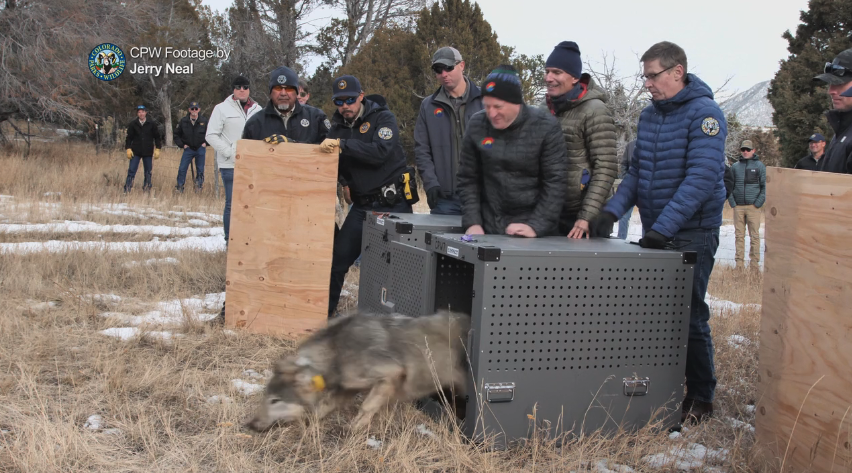GRAND COUNTY, Colo. — A necropsy on a gray wolf that was found deceased in Grand County in September has revealed its likely cause of death.
The U.S. Fish and Wildlife Service (USFWS) confirmed to Denver7 on Thursday that the necropsy results indicate it died from injuries that are consistent with a fight, likely with another wolf.
"The examination revealed trauma typical of wounds caused by wolves and other canids and preliminary analysis of hair samples collected from the scene further supports the involvement of another wolf," the USFWS said in a statement. "Although the wolf had an old, healed gunshot wound to its rear leg, it was in good nutritional condition at the time of death."
Colorado Parks and Wildlife (CPW) announced that the male adult wolf had died on Sept. 12. CPW Director Jeff Davis said staff received a mortality signal from the wolf's GPS collar on Sept. 9 and confirmed it had died on Sept. 10.
"While this is sad news, these types of restoration efforts consider anticipated mortalities in our planning and a degree of wolf mortality, just like for any wildlife, is expected both during restoration efforts and on an ongoing basis," Davis said.
This news came just after CPW confirmed that a sickly male wolf had died shortly after a wolf pack in the county was captured for relocation. Before that, in April, a gray wolf was found deceased after a likely mountain lion attack — the first reintroduced wolf to die.
In total, three of the gray wolves that were reintroduced in December 2023 have died. However, CPW said this should not cause concern.
"Wolf survival is highly variable between regions, but three of the 12 wolves in Colorado (10 translocated wolves and two that remained in Colorado) dying in nine months is not cause for alarm and is in line with typical wolf survival," Travis Duncan, public information officer with CPW, told Denver7 in September.
In total, 10 wolves were first put back on the landscape in December, as voters mandated in 2020.
Per the Colorado Wolf Restoration and Management Plan, CPW listed the primary causes of wolf mortality as infectious disease, starvation and intraspecific strife, where the same species competes for limited resources and can attack each other.
The short-term success of the Colorado reintroduction has several benchmarks, which includes a high rate of survival in the first six months of the release — for context, one wolf died within that timeline. A survival rate of less than 70% within six months would initiate a protocol review, which was not the case for Colorado wolves.
"The survival rate of the translocated wolves was 90% six months after release," Duncan told Denver7. "A survival rate of 90% is high for gray wolves, which only live to be an average of 3.5 to 4 years old in areas without human exploitation such as hunting and trapping."
Colorado is currently home to nine known adult wolves — which includes two that moved south into Jackson County from Wyoming and the seven surviving translocated wolves — and five pups.
One of the adult females and four of her pups, all members of the Copper Creek Pack, were captured in September after multiple livestock depredation incidents and are at a large, secure and undisclosed enclosure while CPW evaluates them. A fifth pup could not be captured.







